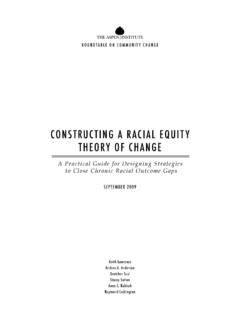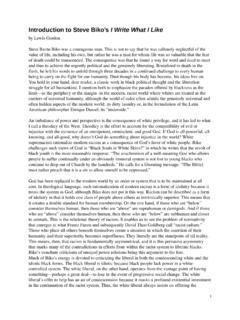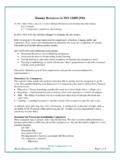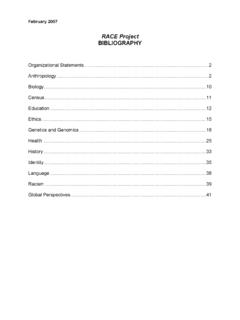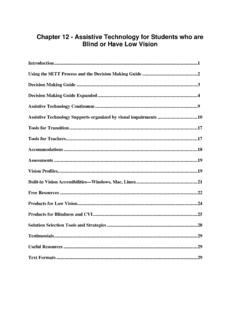Transcription of Text Legibility and Readability of Large Format …
1 DESIGN RESOURCESD R - 1 1 Te x t L e g i b i l i t y a n d R e a d a b i l i t y o f L a r g e F o r m a t S i g n s i n B u i l d i n g a n d S i t e s 1 Text Legibility and Readability of Large Format Signs in Building and Sites Mary Jane Carroll, IDeA Center, SUNY Buffalo Issue and Its Importance to Universal Design Environmental communication systems help us to make decisions when navigating the built environment.
2 These decisions include understanding the organization of space, knowing one s location, and learning how to find one s destination. A signage system that is readable and legible by all users is a fundamental part of environmental communications. In 1997, the US Census Bureau reported that of citizens ( million people) over 15 years of age had difficulty seeing words/letters and that million people were unable to read printed signs at normal viewing distances. This statistic jumps to for individuals 65 years of age and older.
3 The World Health Organization (2002) reported that worldwide there are approximately 180 million persons with vision disabilities. Signage systems that are designed without taking into account this significant portion of the population leave people lost in space. To date, limited empirical data exists to determine the ideal characteristics for Legibility and Readability of Large Format displays like those typically used in buildings and on sites. Many studies have evaluated the Legibility of text in small print.
4 Also, a Large body of knowledge exists around the Legibility of text on standard highway signs. Text size an d font type relating to visual acuity have also been studied extensively. We know that a specific font, Snellen is most legible when measuring visual acuity (Garvey, Zineddin and Pietrucha, 2001). But, these findings have limited relevance in the built environment because sign reading and acuity chart reading are very different for two basic reasons. Vision charts are always presented with high contrast whereas signs in the built environment may not be.
5 Acuity charts do not use words, sentences and phrases like those on signs. Finally, while accessibility standards have established guidelines for signs, they are consensus based rather than evidence based. Recent studies contradict many of these guidelines. A summary of the most recent findings is provided below. Key Terms Legibility of signs: Legibility of a font type is determined by how easily it is to distinguish one letter from another in a particular typeface. Readability : Readability is concerned with how the type is laid out.
6 To make a sign readable, words, phrases and blocks of copy must be easy to read at a distance and while moving. Inter word Spacing: The spacing between words. Inter line Spacing: The spacing between lines of text. ADAAG: Americans with Disabilities Act Accessibility Guidelines for Buildings and Facilities Protanopia: Colorblind 2 Existing Research/Evidence For the purposes of this paper, only research on font and arrangement were reviewed. These are only two aspects of Legibility and Readability . Other significant factors include environmental factors ( whether a sign is illuminated) and personal factors ( the level of attention of the viewer).
7 Font: Character height has the greatest impact on the distance at which a sign can be read and is the most obvious characteristic to be changed to improve Large Format Legibility (Garvey and Mace, 1996). Unlike any other variable, increased character height improves Legibility at a distance; character height is limited only by the size of the sign. Minimum height is measured using upper case X and so character height differs with different fonts. Garvey, Zinnedin and Petrucha (2001), in a laboratory setting determined that Bank Gothic Light and Dutch Regular were the most legible and readable fonts in Large Format display.
8 This finding is particularly significant relative to the size of the sign. For instance, if contrast and lighting are equal, Commercial Script Regular is only legible when 4 times the size of Bank Gothic Light and Dutch Regular, therefore requiring a far larger sign so that it may be read at the same distance. Garvey and Mace (1996) found that letter width of 1:1 or letters with equal width and height improve Legibility distance. Use of case is also important in maximizing both Legibility and Readability at a distance.
9 The use of both upper and lower case text helps ensure that words that are not completely clear and legible to people with a degree of vision impairment or learning disability are still identifiable through shape recognition of the word (Worums et al., 2001). Studies regarding color of text by Garvey and Mace (1996) found no significant difference in Legibility using red, w hite or yellow elements on backgrounds with a minimum 70% threshold for subjects with normal vision. Legge and Rubin (1986) tested subjects with vision impairment and found that protanopic subjects showed a major reduction in sensitivity to red, and that for these subjects green letters were best.
10 Further they recommended that green or gray letters were the colors best suited for the design of reading displays for subjects with normal or low vision. Other studies indicate that yellow is also a good choice. Arrangement: Garvey and Mace (1996) tested inter letter and inter word spacing of 3/7th letter height or almost 7 times the ratio defined by the ADAAG. Dudek (1991), in summarizing European standards, found that inter character spacing of 2/7th letter height and line spacing of 4/7th height were best in Large Format signage.
